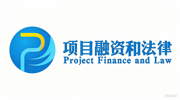Japan’s debt time bomb to complicate BOJ exit path
Ueda’s nomination, if confirmed, would come as the BOJ faces growing pressure to phase out yield curve control (YCC) with inflation running hot and its heavy-handed intervention criticized for distorting bond market pricing.
The stakes are high.
A flurry of big spending packages and ballooning social welfare costs for a rapidly aging population have left Japan with a debt pile 263% the size of its economy – double the ratio for the United States and the highest among major economies.
As a result, Japan spent 22% of its annual budget on debt redemption and interest payment last year, more than the 15% spent on public works, education and defense combined.
And yet, the government’s spending wish list keeps getting longer with Kishida announcing plans to boost Japan’s defense spending and payouts to families with children.
“The BOJ must gradually normalize monetary policy. But that won’t be possible unless wages rise and Japan’s fiscal policy is made more sustainable,” said Yuri Okina, head of a private think tank.
Markets see Ueda as somewhat hawkish on monetary policy, drawing on his remarks in recent years offering a critical view of Kuroda’s radical stimulus program.
In an opinion piece in the Nikkei last July, Ueda said the BOJ must consider an exit strategy from ultra-loose monetary policy and review its extraordinary stimulus program at some point.
While the government’s “very comfortable” funding situation will be sustained as any BOJ rate hike will be gradual, Japan was facing a “very risky time” managing debt, said Christian de Guzman, senior vice president at Moody’s Investors Service.
“We are looking to see how (the BOJ) manages the transition. It is an unprecedented situation.”
S&P Global Ratings warns a future rate hike could affect Japan’s sovereign debt rating if firms, many of whom are accustomed to prolonged ultra-low rates, struggle to absorb rising funding costs.
PAYING THE PRICE
Even before the BOJ takes any action towards an exit, rising bond yields are starting to affect the government’s finances.
Last year, market bets of a near-term rate hike drove up the benchmark 10-year bond yield by 40 basis points to hit a high of 0.48% by year-end. Last month, the yield briefly hit 0.545%, the highest level since June 2015 and above the BOJ’s 0.5% cap.
The increase in long-term rates led the government to revise up its 10-year bond yield forecast to 1.5% for fiscal 2025, up from 1.3% in projections made a year ago, and project the yield to rise to 1.6% in 2026.
The forecasts, used in drafting the budget, are set higher than market levels to ensure government spending plans have buffers against an abrupt spike in borrowing costs. Before YCC, the government’s yield estimates hovered around 1.6 to 2.2%.
With inflation – not deflation – becoming a bigger risk for Japan’s economy, Kishida’s administration is more open than his predecessors to the idea of a gradual BOJ policy normalization, say government officials with knowledge of the matter.
But it will be sensitive to any BOJ action that upends the bond market and hampers government spending plans, they say.
“While it’s better for market forces to drive bond moves more, removing the BOJ’s yield cap could destabilize markets and make investors cautious of buying bonds,” one official said.
“That’s a scenario we’d like the BOJ to avoid.”
Former finance ministry official Kazumasa Oguro, who is now an academic at Japan’s Hosei University, warns the government will pay the price for delaying fiscal reforms during time bought by the BOJ’s yield control policy.
“The BOJ is gradually being cornered into normalizing policy,” he said. “In the end, market forces will prevail.”
(Reporting by Leika Kihara; Editing by Sam Holmes and Hugh Lawson)






